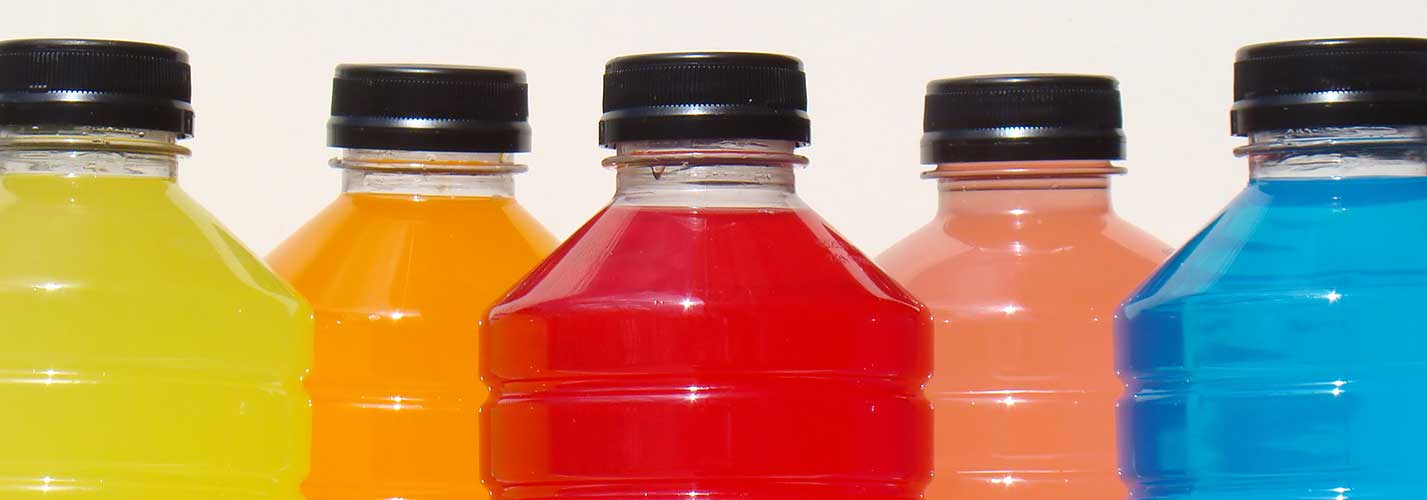
by admin | Sep 5, 2016 | Articles
Are Athletes Drinking Too Much Water? Do you spend hours in the gym or training for a sport? Are you struggling to drink more water? If you’re already well hydrated, it’s no need for extra fluids. Drinking too much water is just as dangerous as not drinking enough. Yet, most people drink beyond thirst during exercise in order to meet their daily fluid requirements. How Much Water Is Too Much? Water makes up about 70 percent of the human body. Every tissue needs this fluid to survive. Every day, you lose water through sweat, urine, breathing, and other bodily functions. Thus, it’s essential to replace lost fluids and stay hydrated. Even the slightest dehydration can lead to fatigue, decreased athletic performance, brain fog, headaches, arrhythmia, fainting, and difficulty breathing. The minimum recommended intake of water is two and a half liters or eight glasses a day. The more active you are, the more water you should drink, at least in theory. The truth is that fluid requirements vary from one person to another. Contrary to popular belief, it’s unneccesary to drink water all day long to prevent dehydration. This can actually negativity affect your health, leading to hyponatremia or water intoxication. Drinking too much water dilutes the sodium content of your blood, causing muscle spasms, cramping, irritability, low energy, tiredness, nausea, and vomiting. In severe cases, it may lead to seizures, coma, and even death. Hyponatremia is common among athletes and individuals engaged in high-intensity activities, such as marathons and triathlons. Certain medications, such as antidepressants and pain relievers, increase the risk too. Depending on its severity, this condition...
by admin | May 12, 2015 | Uncategorized
Soccer Concussions and Head Gear Bumps and bruises are a part of growing up and a part of playing sports. The risk of injury should not deter participation in sports because the BENEFITS that sports participation brings generally outweigh the risks. However, some injuries are more serious than others, such as concussions and brain trauma, and should be safeguarded against if possible. Advances in soccer headgear, headbands and more information about head injuries in soccer are fueling the debate on soccer equipment and safety. Soccer Concussions and Brain Injury Metzl (1) reported in the journal Pediatrics that children heal slower from brain injury than do adults. In addition, according to Metzl adolescents appear to be susceptible to second-impact syndrome, “a rapid and often fatal condition associated with a second head injury while the person is still symptomatic from a first.” It is extremely important if a concussion is suspected that a player not return to play in that game and that he be subsequently medically evaluated and withheld from participation until medically cleared (2). It has been reported that once a person has had one concussion, he is four times more likely to suffer another one. In addition, subsequent concussions are easier to get and take longer to heal (3). Unfortunately, concussions are a regular part of playing soccer. In a three-year study of 10 high school varsity sports, soccer ranked third for boys and first for girls as the sport that produced the most number of injuries that were classified as mild-traumatic brain injury (MTBI). While MTBI accounted for only 4% of the total number of injuries in...

by admin | May 17, 2014 | Articles
Meeting the Sports Nutrition Needs of Young Athletes As if trying to feed teenagers a nutritious diet wasn’t difficult enough at times, taking care of your adolescent athlete can be even more of a challenge. Not to mention that as the parent of an athlete, you’re busy. In addition to driving your athlete to practices and games, you’re stocking up at the grocery store to try to keep up with their appetite. Proper nutrition is imperative for optimal growth and peak performance in adolescents. Unfortunately, most American youth today do not meet the minimum recommended amount of fruits, vegetables, or whole grains, and most go far beyond the recommended daily intake of sodium. On average U.S. teenagers consume more soda than milk or other healthful beverages. How is your teenager doing, and what is it they need? Nutrition and Competition It is without a doubt that what young athletes eat potentially affects their health as well as their performance skills in the sport. If they eat a poor diet, they not only risk illness but also their ability to best train and compete. Eating the right foods and drinking plenty of fluids before, during and after each training session ultimately helps young athletes perform better, have reduced fatigue and additionally, helps prevent them from getting ill. Providing sufficient fuel for muscles, maintaining adequate hydration, and promoting post-exercise body recovery can be achieved best by considering these three distinct phases: before, during and after training. Before training It is critical that young athletes begin each training session with energy stacked to the brim and hydrated properly. This will provide them with...
by admin | May 15, 2014 | Uncategorized
Are Supplements and Ergogenic Aids Worth the Risk? What are Supplements? Supplements are a form of ergogenic aid taken because they are believed to improve or increase performance. What’s the Big Deal About Supplements? There is a drive for athletes to have every competitive advantage possible. In 2001 the estimated global market of supplements was $46 billion.1 The US market alone was estimated at $16.7 billion in 2000.1 Supplements may make whatever claims they like as long as the label contains a list of active ingredients4 Some Performance Supplements in Use Today Supplements to improve strength and power: amino acids, anabolic steroids, boron, chromium, chrysin, colostrum, creatine, hydroxymethylbutyrate (HMB), omithine alphaketoglutarate, prohormones, protein, tribulus terrestris, vanadium and zinc Supplements promoting energy supply: bicarbonate, caffeine, carnitine, creatine, guarana, hornet juice, iron, magnesium, pyruvate and ribose Supplements used to burn fat caffeine, carnitine, ephedra A look at some well known supplements There are not many pros for many of the supplements, so I have broken this article down into the Facts and the Risks of using each of the following supplements: Anabolic steroids Prohormones Human Growth Hormone Creatine Amino acids Protein Caffeine Antioxidants Anabolic Steroids The Facts About Anabolic Steroids: Defined by the 1990 Anabolic Steroid Control Act as “any drug or hormonal substance chemically and pharmacologically related to testosterone . . . that promotes muscle growth.”2 Developed to promote tissue growth in bed rest patients3 Increased testosterone “shown to increase protein synthesis, muscle strength, and lean body mass.” 2 Requires a prescription to possess The Risks With Anabolic Steroid: In males may cause3: Decrease in testicular function Breast development Liver dysfunction...
by admin | May 12, 2014 | Uncategorized
Youth sports thrive on parent-coaches. One estimate finds that parents of players make up 90% of all youth sport coaches (1). Parents have a unique relationship with their own children, and when it comes to coaching your child’s team, it is not easy to separate being the parent from being the coach. The parent-coach/child-athlete relationship in youth sports is one that has not been widely studied, but given the large percentage of parent-coaches and anecdotal reports of negative circumstances associated with parent-coaches, it is important that this issue be examined more closely. Two studies to date deal with this issue. They will both be presented, revealing positive and negative aspects of the parent-coach/child-athlete relationship. Recommendations for making this relationship as harmonious as possible follow. Research has shown that parental involvement and support is a necessary and important part of a child’s participation in sports. However, there is such a thing as too much involvement, and it is possible that in the unique environment of youth sports, having dad, or mom, as coach can push parental involvement toward the over involved end of the continuum. If this is the case, it could create a negative experience for the child-athlete of the parent-coach. Barber, Sukhi and White (2) conducted a study comparing parent-coached and nonparent-coached youth recreational athletes. They hoped to discover if there was any difference between the two groups in motivations for participation or in anxiety level associated with competition. Although their study had methodological weaknesses, it revealed that the parent-coached athletes did not experience significantly higher anxiety related to competition than their nonparent-coached peers. The study also showed...




